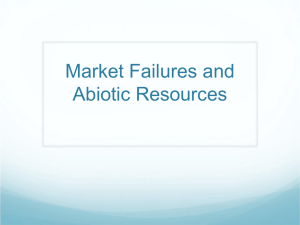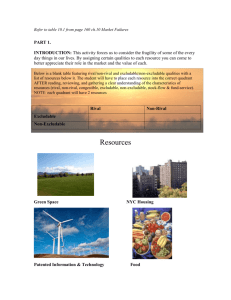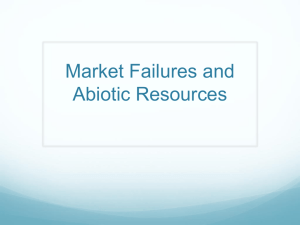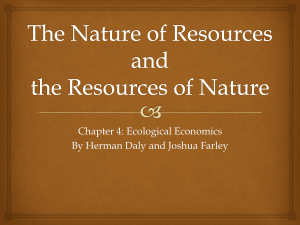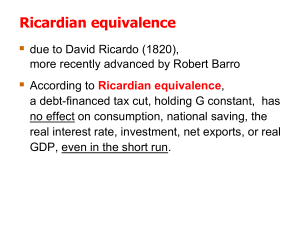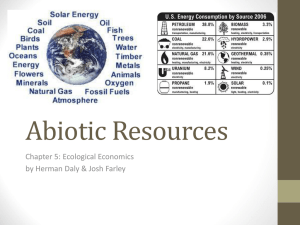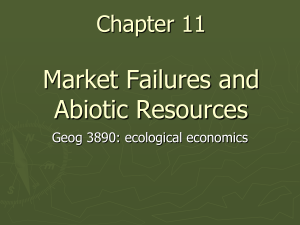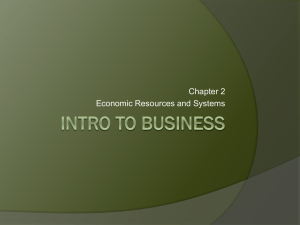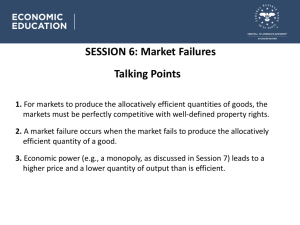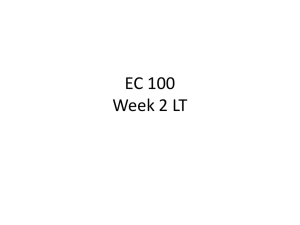L2-MF and abiotic resources
advertisement
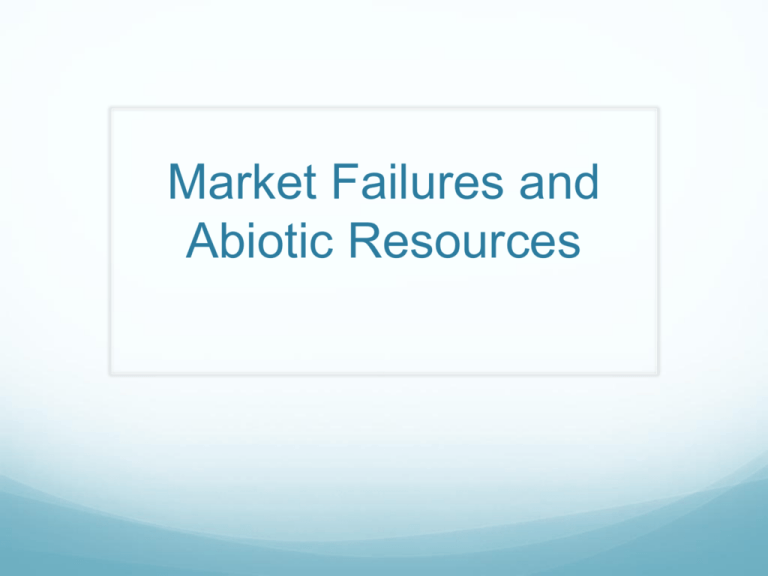
Market Failures and Abiotic Resources Review Fund-service vs. stock-flow resources Rival, non-rival but congestible, non-rival, anti-rival What’s the relationship between rivalness and fundservice, stock-flow distinction Excludable and non-excludable Are These Market Goods? Excludable Rival What about between generations? Resource Exhaustibility: A Myth Refuted by Entrepreneurial Capital Maintenance By John Brätland What is the rule for efficient production of market goods? How Important are Fossil Fuels? Are they essential to modern civilization? What are some of their critical uses? Wealth of Nations and patent on steam engine 20,000 hours of work in a barrel of oil Extremely high energy return on energy invested Are there any suitable substitutes to conventional oil? Have we developed more substitutes or more complements since 1869? What do we know about their demand curve? Negative Externalities = degradation of public goods What are some of the externalities? How serious are they? Are they affecting things that are essential? Are they affecting things with no substitutes? How long do they last? What is more essential and non-substitutable, fossil fuels or the things they degrade? At what spatial scales do they occur? User Cost: The Value Arising from Scarcity What is the opportunity cost of extracting oil today? User cost: the opportunity cost of nonavailability of a natural resource at a future date that results from using up the resource today rather than keeping it in its natural state. Marginal user cost is the value of one more unit of the resource in its natural state; the opportunity cost of extracting one more unit today instead of in the future. What does marginal user cost equal in a perfectly competitive economy? The concept of RENT (royalties) and VCAT User Cost: The Value Arising from Scarcity What’s the opportunity cost of not extracting oil? The Hotelling rule: balancing opportunity costs Backstop technology, discounting and time to What impact should user cost have on rates of extraction? What impact does it have? Why? Can you explain why, in a competitive market, producers would pay resource owners a per-unit fee equal to the MUC for the right to extract a resource? Why don’t we do this? What are the obstacles? Flaws in the NCE analysis Maximizes NPV, ignores future generations No one pays external costs (generally receive subsidies instead) Empirical evidence contradicts it Alternative Explanations Mayflower effect Information effect Scarcity effect What should we expect? Fresh Water Characteristics of Water Stock-flow or Fund-service? We treat it here as a stock-flow. Examples? Renewable or exhaustible? Aquifers? Surface water? What’s the demand curve look like? How does this compare with a conventional demand curve? Will markets allocate water towards its best use? What is the best use? How do markets decide who gets to use something? What are the implications of income distribution with respect to the efficient allocation of water towards its best uses? Will markets allocate water efficiently? Problem of natural monopoly How do monopolists maximize profits? Current policies concerning water Discussion of externalities, user cost (for fossil aquifers), rent, also applies Big issue for VCAT, also relevant to watershed management Ricardian Land What is Ricardian Land? What creates the value in Ricardian land? Farmland? Urban land? Location, location, location Positive externalities How much of the value of Ricardian land is rent? What’s the supply curve for Ricardian land? Relevance to Projects? Speculative Bubbles The current mortgage crisis Asian flu Japan’s economic ‘collapse’ Impact on business cycle How do we avoid these?
